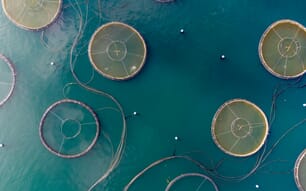
© SAIC
HABs have negative impacts on marine ecosystems, aquaculture and human health. While current testing methods are expensive and can take considerable time to obtain results, GMGI says that its new test allows for rapid, sensitive monitoring to mitigate the impacts of HABs on conservation and human health.
Pseudo-nitzschia is a type of marine algae capable of causing HABs via its production of the domoic acid. This potent neurotoxin can accumulate in shellfish that feed on these algae, causing amnesiac shellfish poisoning (ASP) when ingested by humans and marine mammals. ASP can lead to memory loss, disorientation, gastrointestinal distress, seizures, coma, and in some cases, death.
“In addition to the impact on human and animal health, there are also economic concerns,” said Dr Matt Harke, a GMGI research scientist and principal investigator on the project. “The presence of Pseudo-nitzschia can cause the closure of shellfish resources within state waters, impacting shellfish growers in the region.”
State Resource Managers routinely sample coastal waters for Pseudo-nitzschia and other harmful algal species. Cells are counted under a light microscope to document how much Pseudo-nitzschia is present in the water. However, this process is time-consuming and cannot identify toxic versus non-toxic species, requiring further testing to determine the toxin threat if a bloom is detected. With current testing methods, it can take days to determine the actual threat level, resulting in delays in precautionary closures to shellfish harvest areas that could have otherwise been avoided with timely receipt of test results. Such closures weaken public confidence in seafood safety and result in negative economic impacts to the Commonwealth’s shellfish industry.
Supported by funding from NOAA’s Monitoring and Event Response Harmful Algal Bloom (MERHAB) research programme, Dr Harke and his team, along with collaborators in Florida and Maine, have demonstrated that their new diagnostic test can detect toxic Pseudo-nitzschia in under an hour – not days. The field-deployable test can be used by monitoring agencies to shorten the decision-making window to decide not only whether to close a resource and protect humans, but also when to open the resource as quickly as possible to protect local economies.
To test the efficiency and effectiveness of the technology, GMGI researchers are using laboratory cultures as well as natural field samples.
“Toxic Pseudo-nitzschia isn’t always present in the field, which is good for the ecosystem, but can make it difficult to test our work,” said Dr Harke.
“Being able to grow the algae in the lab and adding it to collected field samples to mimic a bloom scenario is critical to our work, especially since the last few years have seen little if any Pseudo-nitzschia blooms,” he added.
Dr Harke has built collaborations with academic and federal labs to source toxic strains of Pseudo-nitzschia in order to fully vet the developed tools.
Plans for the development of the test include further trials of the technology to detect the RNA gene expression of the toxin gene, which will show if active production of the toxin is occurring, providing increased awareness of toxin threat. This will allow for more informed monitoring, resulting in quicker detection and action.




